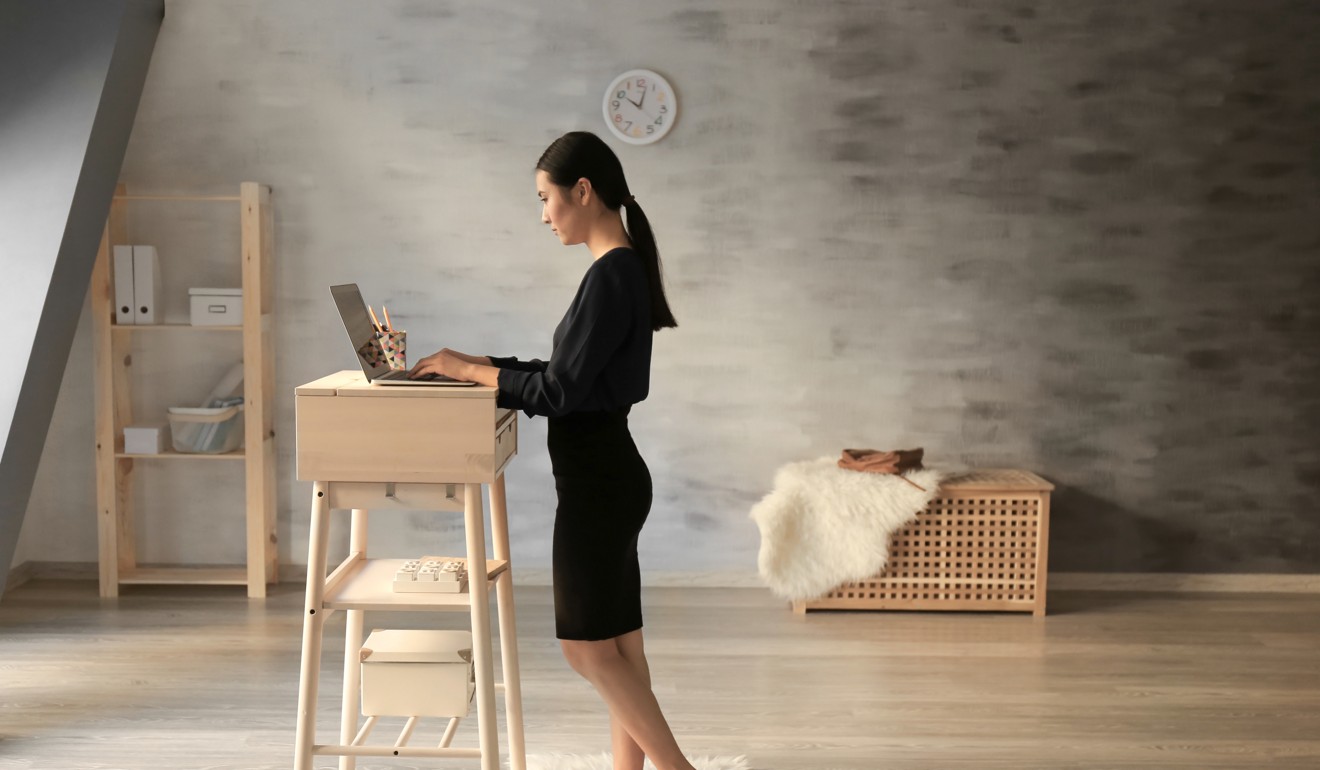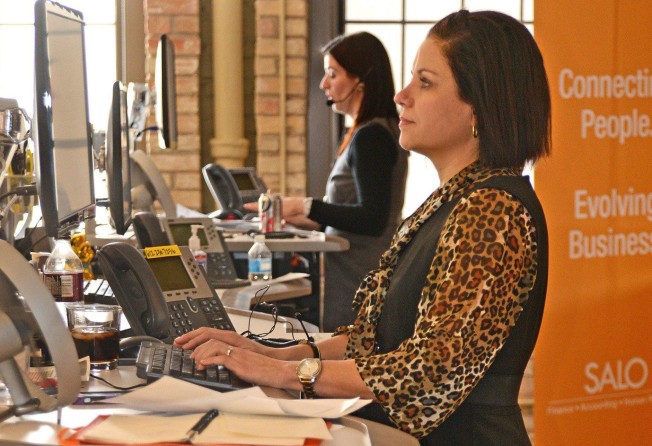
Will standing desks in classrooms help kids to learn or encourage them to mess about more?
Early studies on students standing up in classes show they are more engaged, and it can help children with attention difficulties to concentrate – but it’ll also depend on their age and maturity for it to work

My son’s primary school has recently acquired some new standing desks. My son says he prefers working standing up instead of sitting down, but he hardly gets to use them because there are only three in each classroom and the children argue over using them. What is the purpose of these desks and is it a good way for children to learn?
The concept of standing desks is still a fairly new one in education. Although it may seem strange to those of us who were expected to sit up straight at school and not move, early studies on the effectiveness of using standing desks is promising. Students have shown improved scores and enhanced creativity. They have also been seen to be more engaged and have a better focus on the teacher, as well as increased class participation.
Standing desks are also proving to be successful in offices, where employees are literally more mobile and displaying a reduction in sedentary behaviour as well as improved mood. The fact that standing burns many more calories than sitting is another advantage highlighted by research, in a world where obesity in children and adults is becoming a major issue.
Therefore, more schools in Hong Kong and around the world are experimenting with this idea. When teachers try it, they have to rethink their classroom configuration, because the modern educational approach demands more interaction and collaboration among students.

Sometimes teachers offer an element of seating choice for different activities. However, as your son has reported, this can cause difficulties if pupils argue or certain children dominate seats that others want to use. Depending on the age and maturity level of the students, teachers may need to rotate or timetable popular seating areas to make sure everyone has a fair chance of using them.
Standing desks are particularly advantageous for children with attention difficulties and those who find it hard to sit still for periods of time, giving them an outlet for their energy that does not necessarily disturb others in the classroom.
They can help to decrease disruptive behaviour such as students annoying their neighbours, making noises or escaping to the bathroom when they don’t need to go in order to stretch their legs.
A popular feature included in the design of some standing desks are fidget bars that, as the name implies, gives pupils who need to move frequently a chance to fidget by swinging their feet without affecting anyone around them.
The chairs available for classrooms come in varying shapes and heights, including some that swivel and allow for movement. As well as standing desks there can be kneeling tables, booths, semi-enclosed low bench areas conducive to group discussions, and movable tables that allow for a variety of activities and groupings.
Often, the key to success is flexibility, allowing seats and other furniture to be arranged and used according to each task. An interactive group task, for example, may take place on the floor or around a group of tables, whereas for an extended writing activity, which demands individual concentration, pupils may choose to sit away from their peers or use a standing desk.
Teachers may need to rotate or timetable popular seating areas to make sure everyone has a fair chance of using them
The new emphasis on children being aware of their own learning styles and taking responsibility for their decisions will provide them with crucial life skills for the future.
It can be more challenging for teachers to manage a flexible classroom in which students are often moving around. Active listening skills, such as facing the teacher when important instructions are being imparted, need to be emphasised, because pupils no longer necessarily face the front of the classroom.
Educators have known for a long time that when children learn in a comfortable and stimulating environment, their confidence and ability to learn increase enormously. Schools are now working with engineers and architects to design inspiring learning environments where the physical space and furniture supports and enhances learning.
Of course, all these innovations cost money, so schools will need a strategic development plan to phase in these ideas.
The concept of standing desks has been taken a step further. Some adults who work from home have acquired “treadmill desks” – the latest fitness trend, which consists of walking on a treadmill while you work (the desk frame is slotted around the base of the treadmill).
This allows busy people to keep fit while being productive, preventing all sorts of health problems and back pain caused by hours of desk-bound sitting. Who knows, perhaps the school of the future will incorporate these, too.
Julie McGuire is a former Hong Kong primary school teacher